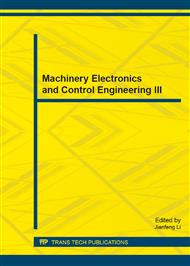p.401
p.405
p.409
p.413
p.417
p.421
p.427
p.431
p.435
On-Site Identification of Zero Resistance Insulator Based on Infrared Thermal Image and Weights-Direct-Determination Neural Network
Abstract:
A method using infrared thermal images and weights-direct-determination neural network (WDDNN) to identify the zero resistance insulators on-site is presented. The basic procedures were as follows: the infrared thermal image were denoised, intensified, segmented, and a rectangular which was regarded as object was intercepted in the insulators chain; in view of the relationship between gray value of infrared thermal images and temperature of object surface, four parameters which stand for standard deviation, absolute deviation, quartiles and range of gray value, were extracted directly; these four parameters were used as the input of WDDNN to train the model, which could be used identifing the zero resistance insulators after being trained. This method can effectively avoid the interference of transmission lines, and can meet the real-time require when identifying on-site. Experimental results verify the feasibility and effectiveness of this method.
Info:
Periodical:
Pages:
417-420
Citation:
Online since:
December 2013
Authors:
Price:
Сopyright:
© 2014 Trans Tech Publications Ltd. All Rights Reserved
Share:
Citation:


